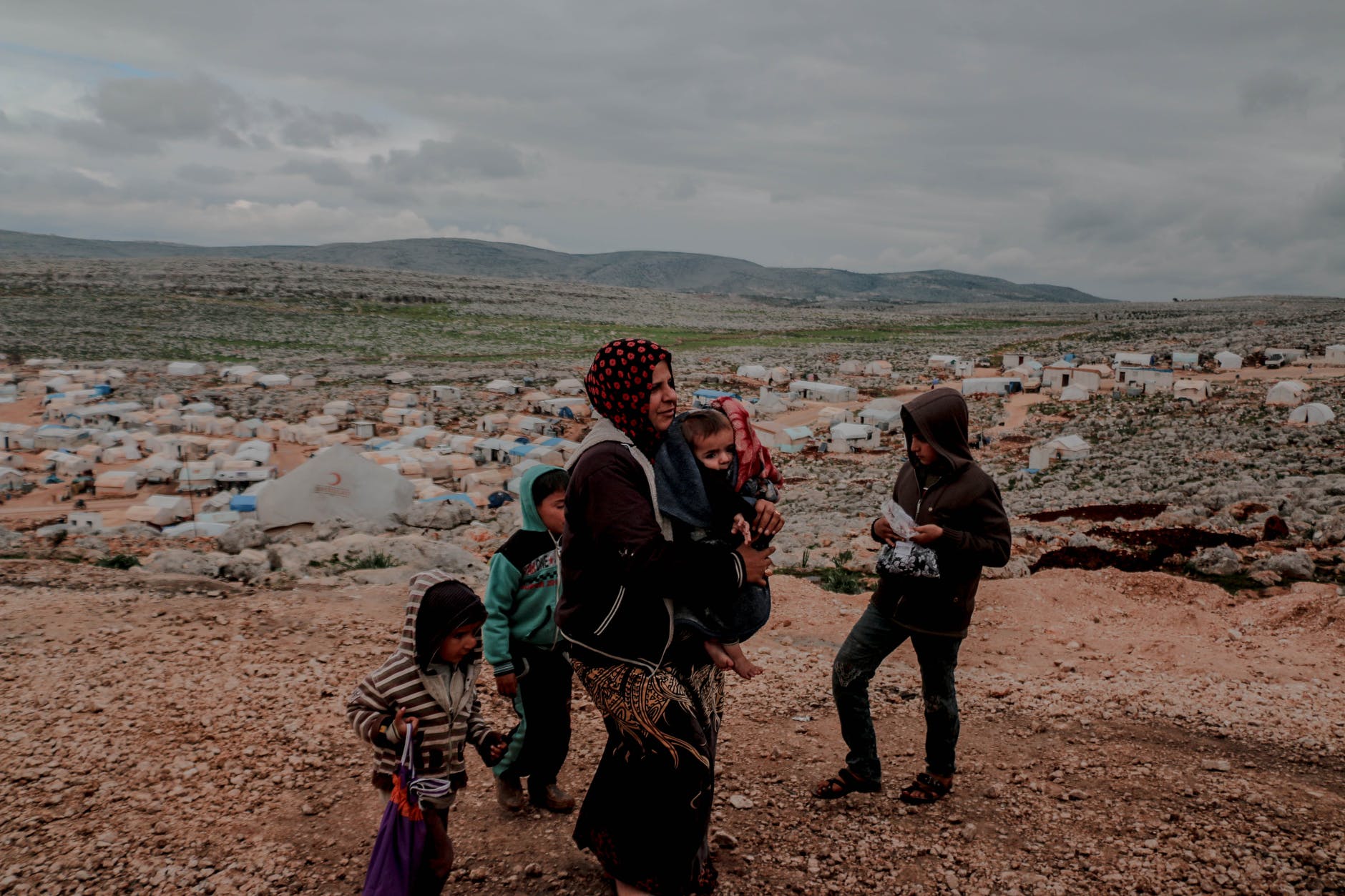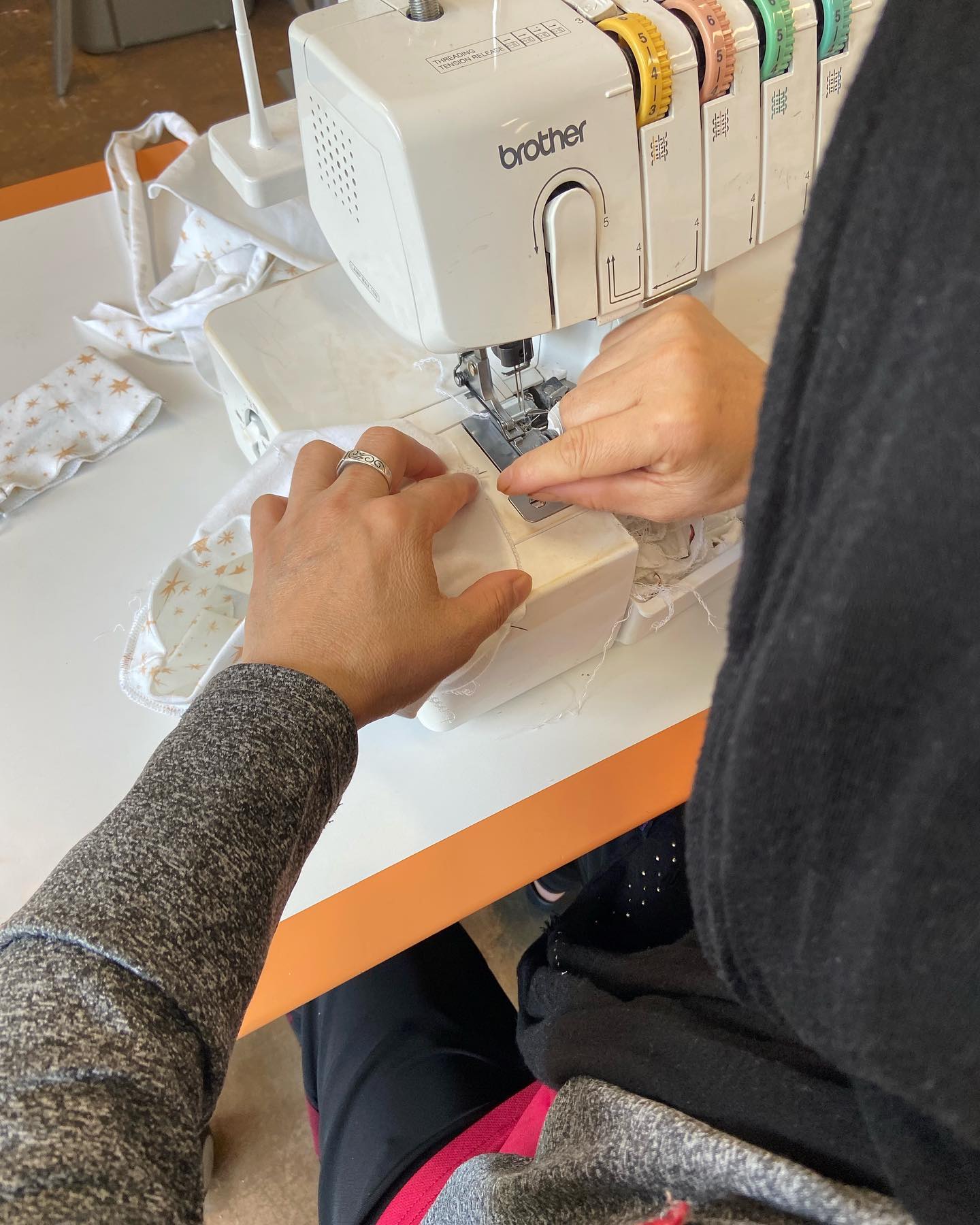When we first meet our refugee students at the beginning of the fall semester, we really only know the basic facts about them. Name, country of origin, address. In those first few weeks, a little more is revealed. How quickly does this student pick up sewing skills? Do they have basic English skills or are they illiterate in their home language? Is this woman a take charge type of personality or is she more laid back?
We slowly learn some of these things, aspects of our students that directly relate to class. But there’s often a hidden layer, a story that undergirds personality, informs their responses, affects their learning. This is their story. This is the details of their journey that are often too painful or hard to recount at first to us, the American teachers. Our worlds are so different – how can they make us understand?

And so we are tempted to label a student, sometimes in negative ways because we don’t see this hidden side. Jesus wisely reminds us to avoid judgement, even more so when we “think” we know what is going on. (Matthew 7:1)
What’s the antidote? Listening. Learning. Understanding. Accepting. It takes time to build trust and to provide a place of safety where a woman can share bits of her story. Every time one of our students pulls back that curtain, I find my breath taken away by the grief and hardship that is encapsulated in those words.
“Some of my family was killed in their homes this weekend by the military.”
“My parents are still in the refugee camp. I don’t know when I will see them.”
“I lived in a refugee camp for 20 years. While I was there, my husband died.”
“I work most of the night. Then get a few hours of sleep. Then come to class.”
“I only could go to school until the 4th grade.”
“My brother is in hiding. The Taliban is looking for him to hurt or kill him.”
“My family in [home country] has no work. With no work, there is no medical care. It is hard to get food. I am worried.”
“My son was killed.”
I can’t capture the broken English and poignant phrases used to share these stories with me. The summary sentences above are just that – summaries of longer conversations and stories. I wish I could do them justice. But many conversations end with something along the lines of, “It is hard. It is heavy. Sometimes I can hardly take the weight of my worry [or “sadness” or “fear”].
In Refugee Mental Health, the authors points out that cultural humility is an integral part of providing healing for our refugee friends. And this means, in practice, recognizing from the beginning that there are limits in our perceptions and understanding of the refugee experience. This self-awareness leads us to instead make spaces for listening and for learning. We create space and time to listen to our students’ stories. We also value celebrating their cultural heritage and homeland.
The woman who seems stubborn – she is a survivor.
As the refugee women in our program share, we then understand them better. The woman who seems stubborn – she is a survivor who has forged through great difficulty to rescue her son. It isn’t stubbornness so much as it is determination to make things happen. The woman whose English just doesn’t improve and we were unsure why she wouldn’t enroll in ESL – she has to work long, long hours. There is no time (and certainly no energy) for English classes. A student who regularly misses class – she is dealing with homesickness, depression and grief.
Sewing class. It’s a time to learn a skill, yes. But it is also a time for the women in our class to find a listening ear and when they’re ready, a chance to share a bit of their story. And I hope it is a time when we Americans learn to understand. When we learn to listen. When we learn what courage and perseverance look like.

